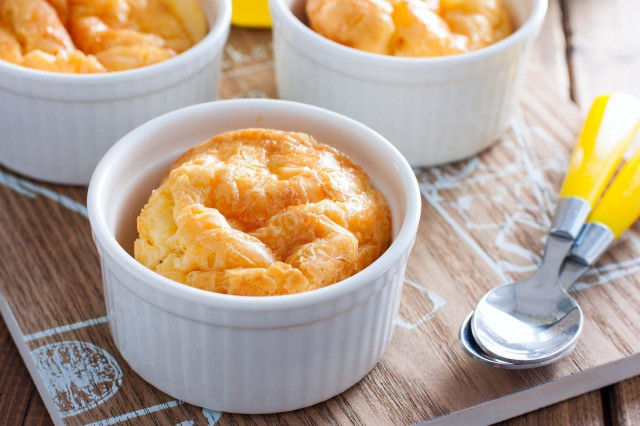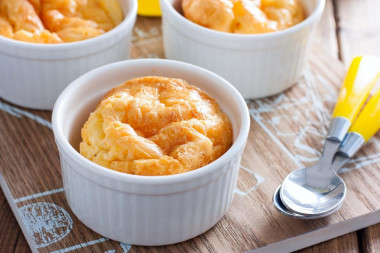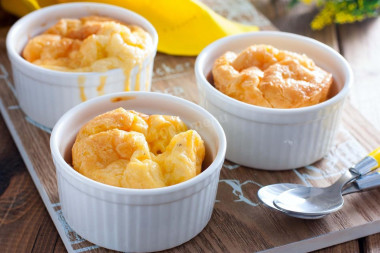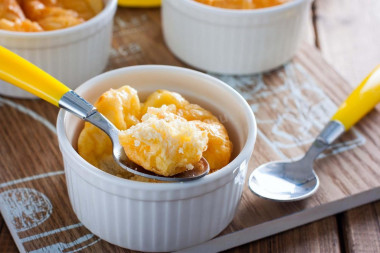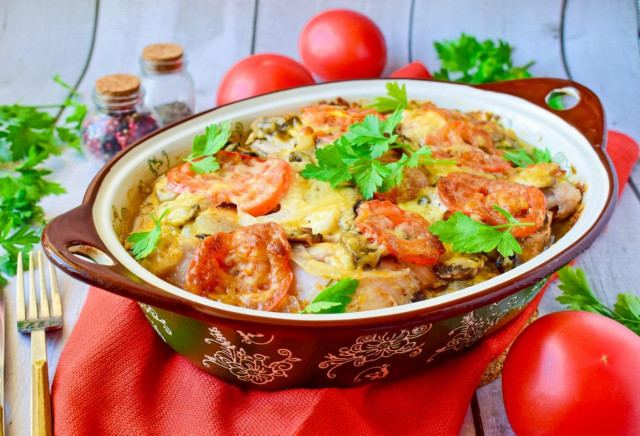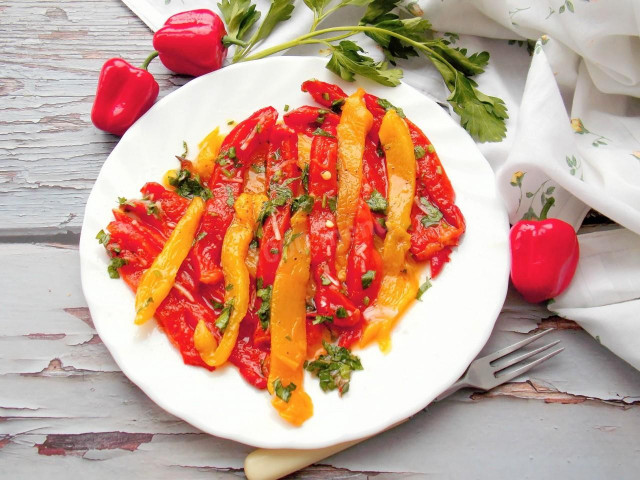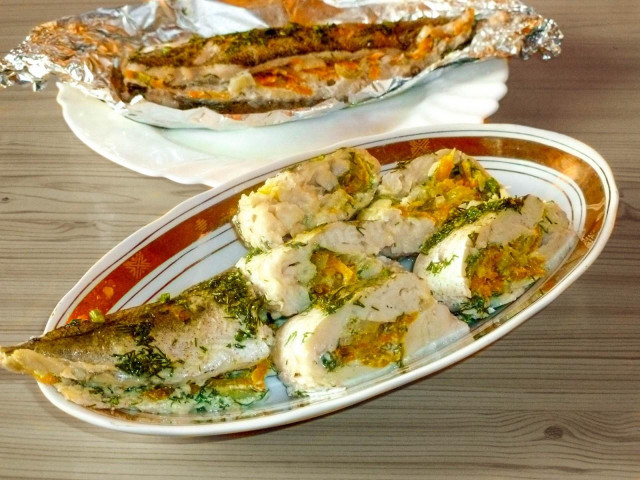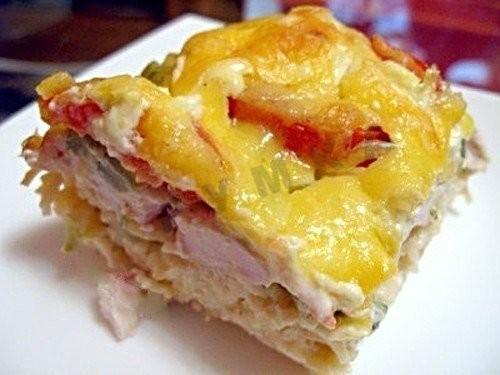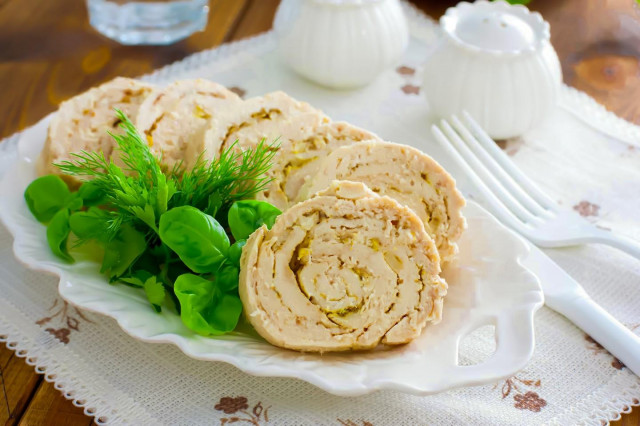Composition / ingredients
Step-by-step cooking
Step 1:
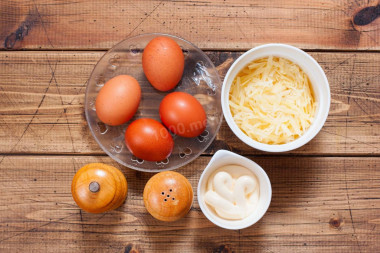
Prepare the specified products for making a casserole of eggs and cheese. I take hard cheese, I have Parmesan cheese. Medium-sized eggs. If you prefer lightly salted food, then it is better not to add salt to the casserole: the cheese itself is salty, salt is also present in the mayonnaise. It is better to make a casserole in small high molds - it rises a lot, you can take a common one, or you can have portion ramekins. Turn on the oven to warm up to 180 degrees.
Step 2:
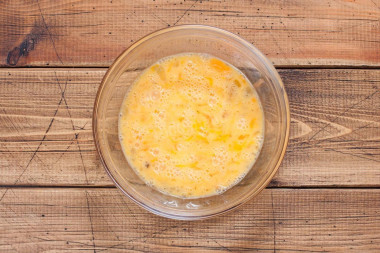
In a deep bowl, break the eggs one by one, add salt and ground black pepper to taste. Stir everything with a fork. You just need to mix the ingredients, and not beat the eggs until fluffy. To taste, you can add other favorite spices. I think Provencal herbs and smoked paprika would be appropriate here.
Step 3:
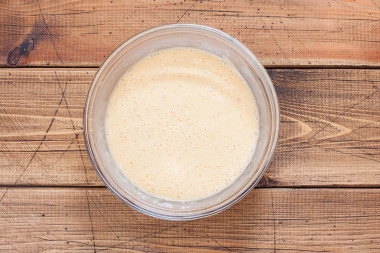
Grate the selected hard cheese on a coarse grater. Add mayonnaise to the eggs and mix all the ingredients together. Add half of the cheese to the egg-mayonnaise mixture and mix.
Step 4:
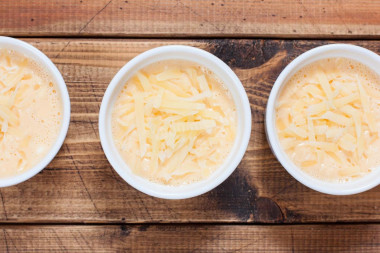
Lubricate the selected baking containers with vegetable or butter. Pour out the egg mixture, filling the molds not to the very edge, retreating at least a centimeter and a half. Spread the remaining grated cheese on top of the molds. Put the casserole molds in the oven for 20-25 minutes, or until a golden crust forms. The casserole rises very much, but then it goes down. After the end of the baking time, do not open the door immediately.
Step 5:
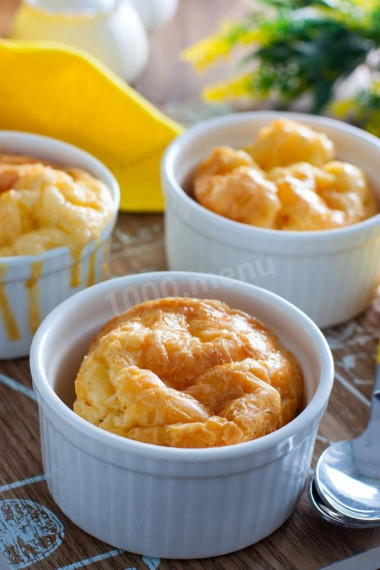
Ready-made casserole of eggs and cheese to serve hot. When cooling down, such a casserole loses only in appearance - it completely sinks and becomes faded. The hot casserole is lush, fragrant and delicious.
I liked the egg casserole with cheese. It is similar to an omelet, but more dense and satisfying. In the oven, it rises very much, and it is very important not to omit the moment when you do not open the oven yet, so that it does not fall sharply, and when it cools down and goes down. This is the dish that needs to be served to the table immediately and immediately start eating it.
Caloric content of the products possible in the composition of the dish
- Dutch cheese - 352 kcal/100g
- Swiss cheese - 335 kcal/100g
- Russian cheese - 366 kcal/100g
- Kostroma cheese - 345 kcal/100g
- Yaroslavsky cheese - 361 kcal/100g
- Altai cheese 50% fat content - 356 kcal/100g
- Soviet cheese - 400 kcal/100g
- Cheese "steppe" - 362 kcal/100g
- Cheese "uglichsky" - 347 kcal/100g
- Poshekhonsky cheese - 350 kcal/100g
- Lambert cheese - 377 kcal/100g
- Appnzeller cheese with 50% fat content - 400 kcal/100g
- Chester cheese with 50% fat content - 363 kcal/100g
- Edamer cheese with 40% fat content - 340 kcal/100g
- Cheese with mushrooms of 50% fat content - 395 kcal/100g
- Emmental cheese with 45% fat content - 420 kcal/100g
- Gouda cheese with 45% fat content - 356 kcal/100g
- Aiadeus cheese - 364 kcal/100g
- Dom blanc cheese (semi-hard) - 360 kcal/100g
- Lo spalmino cheese - 61 kcal/100g
- Cheese "etorki" (sheep, hard) - 401 kcal/100g
- White cheese - 100 kcal/100g
- Fat yellow cheese - 260 kcal/100g
- Altai cheese - 355 kcal/100g
- Kaunas cheese - 355 kcal/100g
- Latvian cheese - 316 kcal/100g
- Limburger cheese - 327 kcal/100g
- Lithuanian cheese - 250 kcal/100g
- Lake cheese - 350 kcal/100g
- Gruyere cheese - 396 kcal/100g
- Ground black pepper - 255 kcal/100g
- Salad mayonnaise of 50% fat content - 502 kcal/100g
- Light mayonnaise - 260 kcal/100g
- Provencal Mayonnaise - 624 kcal/100g
- Provencal mayonnaise - 627 kcal/100g
- Table mayonnaise - 627 kcal/100g
- Salt - 0 kcal/100g
- Chicken egg - 80 kcal/100g

